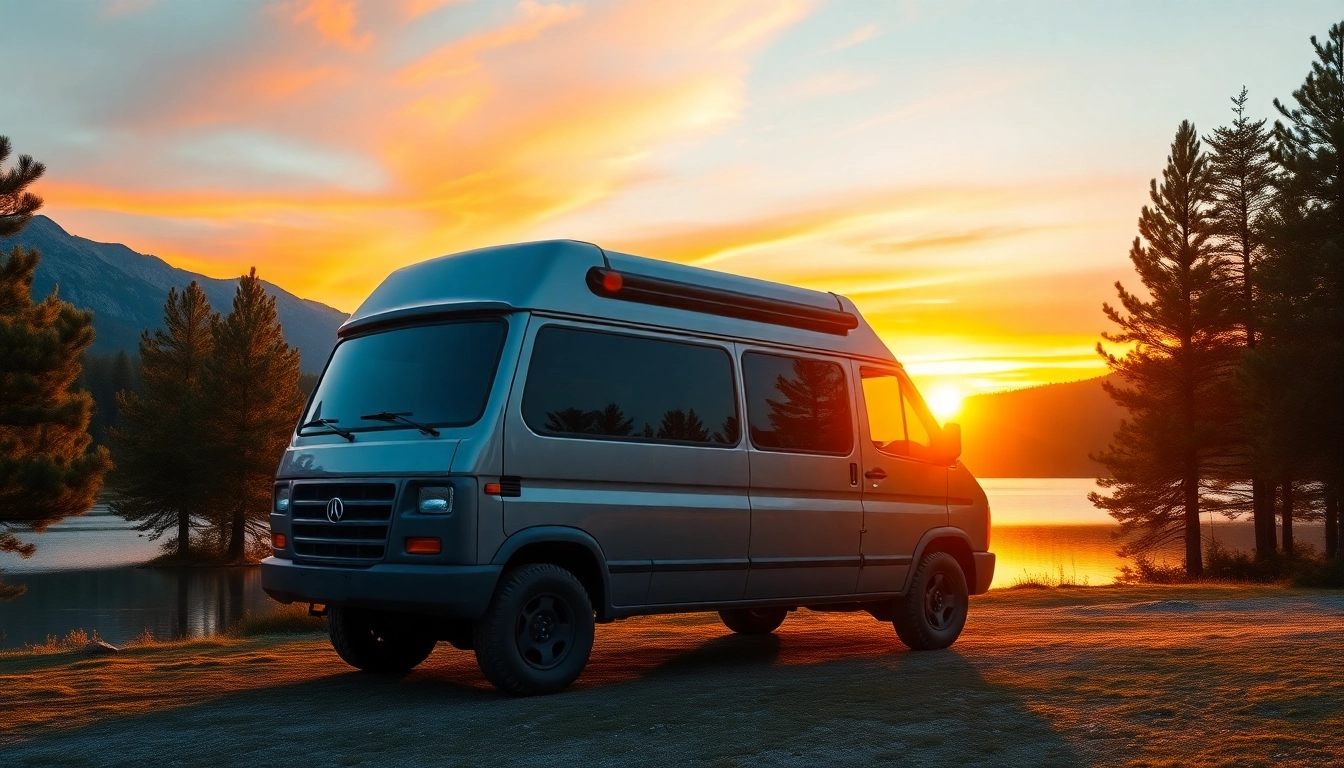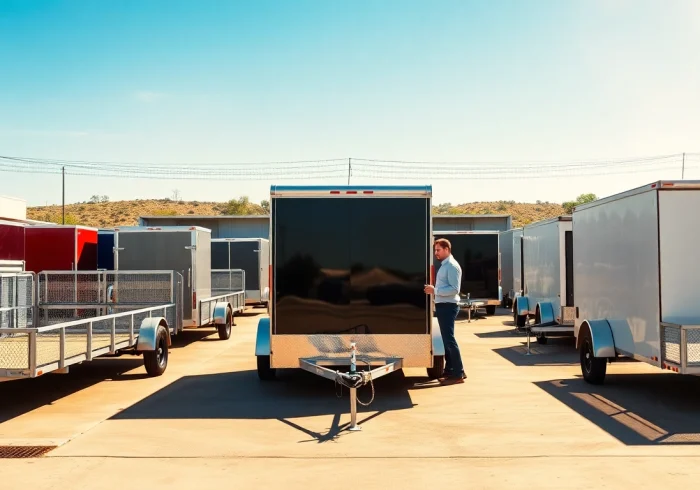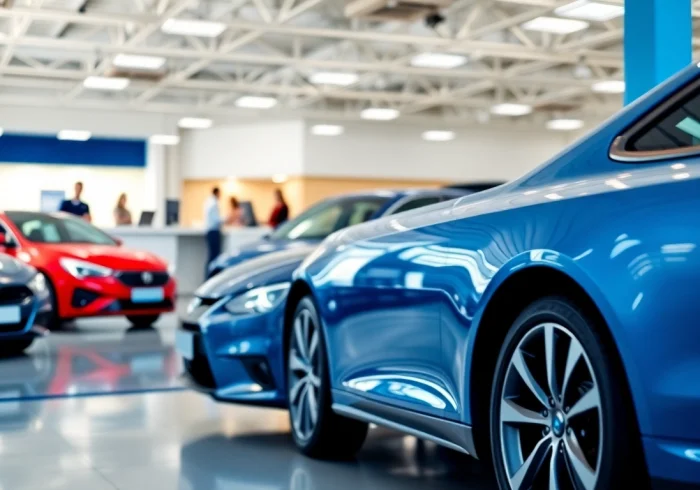Understanding the Perfect Campervan: What to Look For
For adventurers and wanderers alike, finding the perfect campervan is often the first step towards the open road and unforgettable journeys. However, the search for the ideal campervan can be overwhelming, given the variety of options available today. This guide will help you navigate the essential aspects of campervan selection to ensure your future travels are both enjoyable and comfortable. From understanding what features are crucial for comfort and safety to evaluating size and layout, we will cover everything you need to know.
Essentials for Comfort and Safety
When selecting a campervan, comfort and safety must be at the top of your checklist. Key considerations include:
- Seating and Sleeping Arrangements: Look for a campervan that offers comfortable seating for the number of passengers that will be traveling with you. Additionally, assess the sleeping arrangements—whether they consist of pull-out beds, bunks, or a fixed bed. Prioritize a good mattress and adequate ventilation in sleeping areas.
- Safety Features: Essential safety features include seatbelts for all passengers, airbags, anti-lock braking systems (ABS), and electronic stability control. Some modern campervans also come equipped with advanced driver-assistance systems that enhance safety during your travels.
- Kitchen and Bathroom Facilities: Depending on your travel style, consider the availability of kitchen appliances such as a stove, fridge, and sink, particularly if you prefer cooking on the road. Bathrooms with proper ventilation and storage can also add significant comfort during longer trips.
Choosing the Right Size and Layout
The size and layout of your campervan should match your lifestyle and the type of trips you plan to take. Here are some key points to consider:
- Number of Passengers: The most critical factor when determining size is the number of people traveling in your group. If traveling with family or a group of friends, ensure there’s plenty of space not only for sleeping but also for socializing.
- Length and Height: Most campervans are categorized as compact, mid-sized, or large. Compact options are easier to maneuver and park, whereas larger ones offer more room related to amenities but can pose challenges in urban settings.
- Layout Design: Popular layouts include rear lounges, kitchen-dining layouts, or integrated bathroom facilities. Assess how each layout works for you—some may prioritize comfort while others may focus on utility.
Features That Enhance Your Experience
Several features can significantly enhance your campervan experience. Here’s what to look for:
- Solar Panels and Battery Systems: These additions can enable you to go off-grid, giving you the freedom to camp in remote locations without relying on shore power.
- Heating and Air Conditioning: Depending on the climates you plan to explore, consider heating options for winter travels or air conditioning for summer adventures.
- Outdoor Equipment: Consider features such as awnings, bike racks, and exterior storage compartments that can enhance your overall camping experience.
Top Campervan Brands and Their Models
The market is filled with brands offering diverse models, each with its own unique features and benefits. Familiarizing yourself with some of the leading brands can help streamline your search for the perfect campervan.
Featured Brands with Unique Offerings
Here are some of the most notable campervan brands recognized for their quality and reliability:
- Volkswagen: Iconic for their reliability, VW offers several beloved models, including the Transporter and California, which create a perfect blend of compact size and comfortable living space.
- Ford: Known for versatility, the Ford Transit is an excellent choice for custom conversions, providing robustness and ample interior space.
- Mercedes-Benz: The Sprinter is perfect for those who appreciate luxury on the road, offering advanced technology and comfort, along with space for extensive customizations.
- Nissan: The NV series provides a solid base for conversions at a competitive price point, popular among DIY enthusiasts.
Comparative Analysis: Specs and Pricing
Before making a purchase, evaluate different models based on their specifications and price points:
- Volkswagen Transporter: A frequently praised model for family trips, starting at approximately £35,000 with excellent fuel efficiency.
- Ford Transit Custom: Ranges between £28,000 and £40,000 depending on mods; noted for its spacious interior and custom conversion opportunities.
- Mercedes-Benz Sprinter: Starting price around £40,000; offers luxury paired with technology but at a higher price point.
User Reviews and Experiences
Understanding the experiences of other users provides invaluable insights into the functionality and usability of various models. Here are some insights:
- Many owners of the VW California noted its compact size, which is ideal for urban driving, yet spacious enough for family use.
- Transit users often praise the vehicle’s customization options and service availability across numerous regions.
- Mercedes Sprinter owners highlight the luxury features, user-friendly interfaces, and extensive safety options as significant advantages despite its higher cost.
Cost Considerations for Your Perfect Campervan
Budget is often a deciding factor when selecting your campervan. Understanding the costs associated with buying versus building can guide your financial planning.
Buy vs. Build: Pros and Cons
One of the most critical decisions is whether to purchase a pre-built campervan or opt for a custom build yourself.
Buying a Campervan: This is straightforward, often with warranties and dealer support. However, it can be more expensive, and customization options may be limited.
Building a Campervan: Building allows for complete customization according to your needs and can be more cost-effective, particularly if you source used parts. However, it requires time, skills, and often extensive research.
Financing Options and Budgeting Tips
Securing financing involves options such as loans, leasing, or even saving for a cash purchase. Each has its implications:
- Personal Loans: These can offer decent interest rates but require a solid credit score.
- Leasing: May provide lower monthly payments, but you won’t own the vehicle at the end of the lease term.
- Budgeting: Consider not only the purchase price but ongoing costs like insurance, maintenance, fuel, and storage.
Cost vs. Value: Long-term Considerations
Purchasing a campervan is not just a financial investment but a lifestyle choice. Evaluate the following:
- Resale value: Some brands, such as VW, maintain a higher resale value over time.
- Cost of components: Consider the longevity of parts and potential future repairs which can add costs down the line.
- Usage versatility: A model that may serve well for weekend adventures may not align with long-term travelers looking for a full-time living solution.
Practical Tips for Customizing Your Perfect Campervan
Customizing your campervan can enhance its functionality to suit your needs. Here are a few key areas to focus on:
Interior Modifications for Functionality
Consider modifications that optimize space and improve practicality:
- Storage Solutions: Use under-seat storage, overhead compartments, and foldable furniture to maximize space.
- Multipurpose Furniture: Opt for furniture that serves dual purposes, such as a sofa that converts into a bed or a table that can fold away easily.
- Kitchen Efficiency: Design your kitchen to incorporate compact appliances and easy-to-access supplies.
Choosing Eco-friendly Materials and Appliances
Creating a sustainable campervan is not only beneficial for the environment but can also enhance your experiences:
- Solar Energy Systems: Installing solar panels can reduce dependency on fossil fuels and power your appliances.
- Eco-friendly Insulation: Consider materials like sheep’s wool or recycled denim for insulation, which are sustainable and effective.
- Low-Flow Fixtures: If your campervan has a kitchen or bathroom, install fixtures that minimize water usage.
Creating an Aesthetic That Reflects You
Customization should also include personal touches:
- Color Palette: Choose a color scheme that resonates with your personality for both interior and exterior aesthetics.
- Textiles and Accessories: Include cushions, curtains, and wall art that reflect your style and make the space feel like home.
- Lighting: Install adjustable LED lighting that creates ambiance while being energy-efficient.
Planning Adventures with Your Perfect Campervan
Now that you have your campervan, the real adventure begins. Strategic planning can enhance your adventures:
Best Destinations for Campervan Trips
Some beautiful destinations for campervan travelers across the United Kingdom include:
- Lake District: Known for its stunning lakes and mountains, ideal for hiking and exploring.
- Scottish Highlands: Offers breathtaking scenery and tranquility, perfect for those looking for solitude.
- Cornwall: Enjoy picturesque coasts with quaint villages and the opportunity for beach activities.
Safety Tips for Road Trips
Ensuring safety while on the road is paramount:
- Pre-trip Checks: Always perform a thorough vehicle check, including tire pressure, oil levels, and brake functionality.
- Emergency Kit: Carry a well-stocked emergency kit that includes a first aid kit, tools, and basic provisions.
- Driving Conditions: Stay informed about weather conditions and road rules in various areas you plan to visit.
Community and Resources for Van Lifers
Engaging with the van-lifer community can provide support and inspiration:
- Online Forums: Websites like VanLife Forum offer spaces to exchange tips, reviews, and inspiration.
- Social Media Groups: Platforms like Facebook and Instagram have numerous groups dedicated to van life, offering a wealth of shared experiences and resources.
- Gatherings and Meetups: Joining local or national events can lead to valuable connections and friendships with likeminded travelers.



